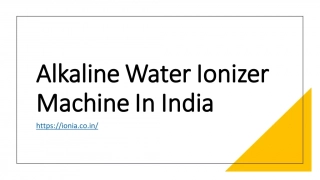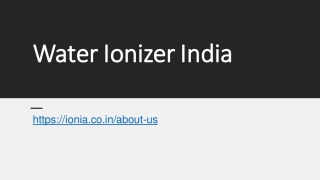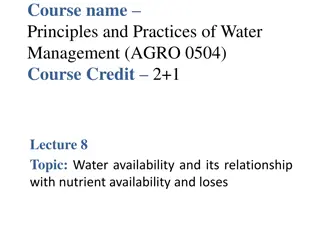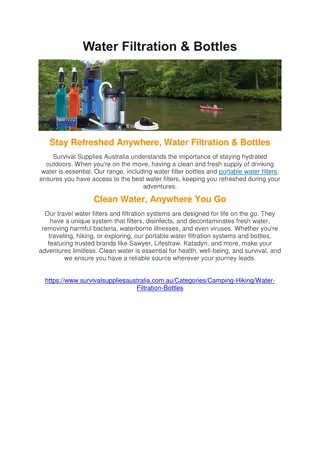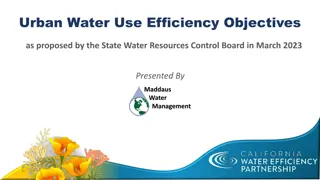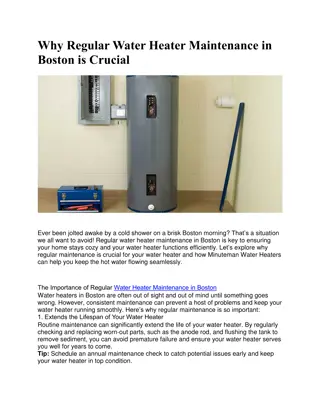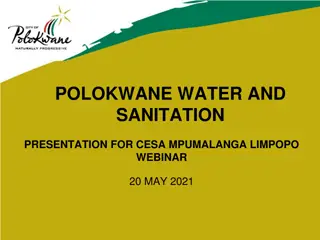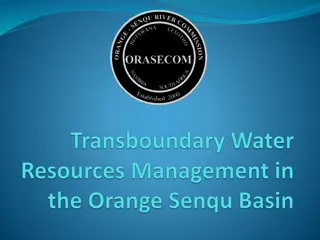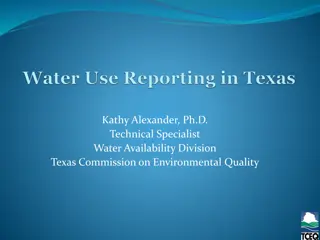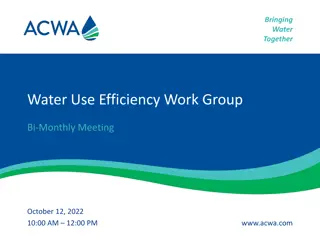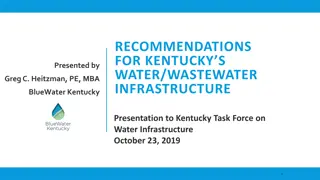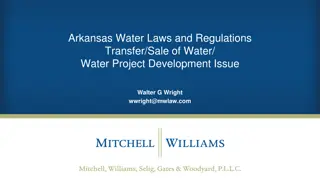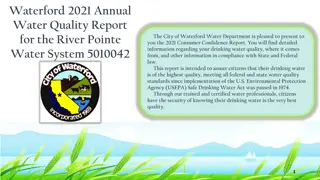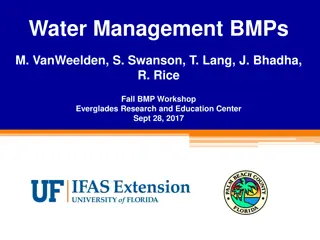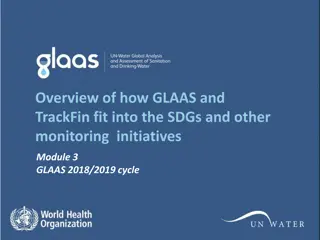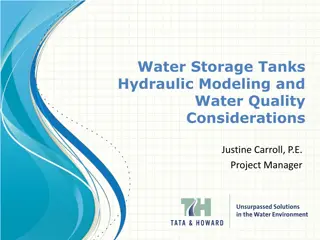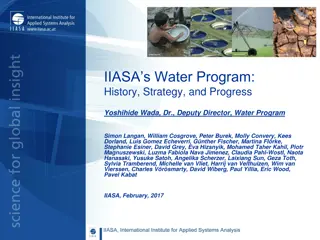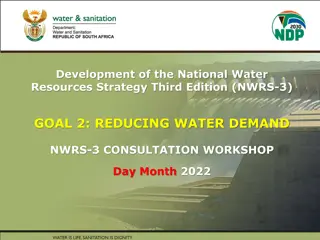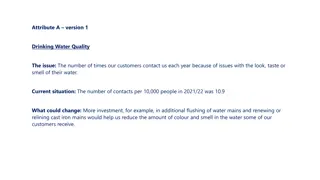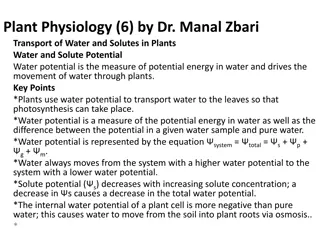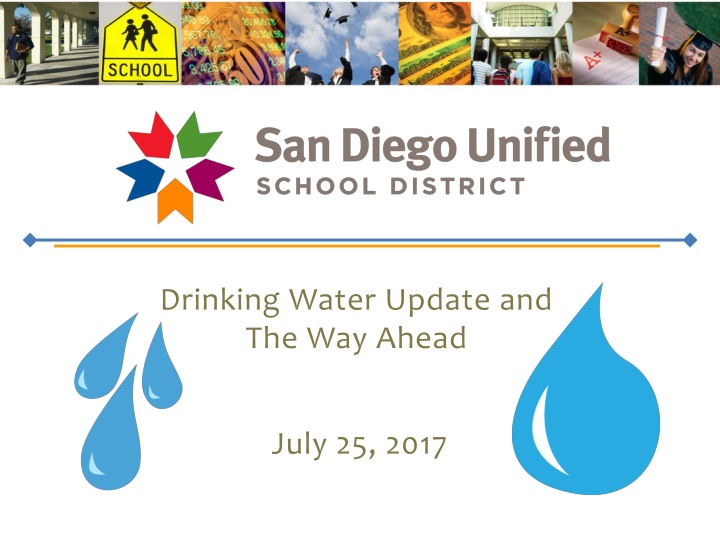
Drinking Water Update and Remediation Plan Overview
Stay informed about the latest progress on drinking water quality testing and remediation efforts in the city. Learn about the results, objectives, and steps being taken to ensure safe lead levels in water outlets across the district.
Download Presentation

Please find below an Image/Link to download the presentation.
The content on the website is provided AS IS for your information and personal use only. It may not be sold, licensed, or shared on other websites without obtaining consent from the author. If you encounter any issues during the download, it is possible that the publisher has removed the file from their server.
You are allowed to download the files provided on this website for personal or commercial use, subject to the condition that they are used lawfully. All files are the property of their respective owners.
The content on the website is provided AS IS for your information and personal use only. It may not be sold, licensed, or shared on other websites without obtaining consent from the author.
E N D
Presentation Transcript
Drinking Water Update and The Way Ahead July 25, 2017
Where we are now City Testing complete: 967 Samples 4 samples over action level of 15 parts per billion (ppb) 53 samples over 5 ppb (low detection limit) and under 15 ppb Blood lead level testing of Birney ES students District team: Safety, PPO, Communications, Legal, Nursing and Wellness Continued District Testing - Areas not covered by State action Child Development Centers/ Pre-schools Administrative sites 2
Sample Results Greater than 5 ppb by School Type 5
Long Term Objective No drinking water outlet will have a lead content above 5 parts per billion (ppb). The SWRCB, EPA and CDC acknowledge there is no safe level of lead in drinking water; our plan will move the district closer to this, significantly beyond current regulations. District objective of 5 ppb: One third of the EPA established action level of 15 ppb. Supported by our current sampling minimum detection limit for reporting as established by the State Water Resources Control Board, Division of Drinking Water. Supportive Infrastructure - the City of San Diego water quality and distribution systems are sound; District plumbing infrastructure is sound. 5 ppb is the bottled drinking water threshold (FDA Standard). 6
5 ppb Plan Components Follow through on City test results, remediating any water outlet over 5 ppb. I. Test all remaining water outlets across district. II. Remediate water outlets identified by district testing. III. Maintain flushing protocol until all testing is complete. IV. Perform quality assurance testing of water outlets into the V. future. 7
I. Follow-through on City testing Schools with levels of lead greater than 5 ppb detected by the 2017 City of San Diego sampling will be prioritized for remediation efforts. 57 water outlets at 38 schools. Remediation is considered complete when test results show less than 5 ppb. Remediation work includes the water outlet tested and other related outlets (located in same building, similar type of construction, etc.), so as to leave the entire campus operating with expected lead concentrations below 5 ppb. 8
II. Test All Remaining Water Outlets Testing those water outlets not tested by the City. Testing to follow state protocol (same as City testing): 1 liter first draw sample, during Normal school operations. Water remains in the line a minimum of six hours before testing. Samples taken by district, testing by certified laboratory. Approximately 7,200 drinking fountains & kitchen sinks used for food preparation throughout the district. Lead contamination most often occurs close to the outlet, so each fountain can be somewhat unique. 9
III. Remediation City testing of 967 water outlets resulted in 56 water outlets with sample results exceeding 5 ppb. 57 of 967 = 5.9% Assuming this trend continues, testing across the district will yield another 366 water outlets with results over 5 ppb. Remediation to follow closely behind testing. When lead is encountered, securing the outlet and remediation efforts will quickly follow. Utilize a variety of remediation methods based on test results and conditions encountered in the field. Making permanent repairs/ replacement as our preferred method. Avoid recurring costs where possible. 10
III. Remediation Methods Plumbing Repair. Investigate and repair/replace plumbing and fixture as necessary; Or remove from service where logical. Install point of use filter. Commercial filters effective to 1 ppb. Filter any water outlet with test results greater than 5 ppb. Filter change twice a year recurring cost. Fewer water outlets with higher quality - Install filtered drinking fountain/bottle filling stations. Consider for middle and high schools, located in common areas. Filter change twice a year recurring cost. 11
IV. Maintain Flushing Protocol Continue daily flushing as an interim measure until water sampling confirms all lead levels are below 5 ppb. 1 minute at each water outlet at the start of the school day. The district will coordinate our follow-on testing to assist sites in being released from daily flushing. Cost: staff time and water waste. Long term: Implement first day of week flushing to avoid extended periods of water stagnation. 12
V. Future Steps Periodically test to ensure water continues to meet established level; Remediation efforts are effective. After initial testing, sample 2% of outlets per year. Increase testing if results indicate levels higher than initial. Revisit no later than 2020 Review options to allow for the district action level to be lowered to 1 part per billion. 13
Our Approach & Timeline Conducting testing and remediation with existing staffing Reprioritizing our Work with impact to: Proactive Safety Efforts Maintenance Projects 3 5 Years to completion. Remediation of City results Follow-on testing Remediation As testing proceeds, remediation will closely follow. 14
Communication & Transparency Under City testing parent notifications when results exceeded 15 ppb. Now - Notification of any result above new district standard of 5 ppb. Transparency in reporting as work progresses. Posting of testing results. 15
Cost Impact 5 ppb Plan - No drinking water outlet will have a lead content above 5 parts per billion One-time cost Recurring Cost NA Staffing Impact Existing I. Follow through on City test results, remediating any water outlet over 5 ppb $160K, ($58K already incurred) II. Test all remaining water outlets across district $200K lab costs NA Existing - 2 FTE adj. priority. Existing - 2 FTE adj. priority Loss of staff time Existing over 3 5 years III. Remediate water outlets identified by district testing. Combined effort - Plumbing repairs, Filtering, and Replace with high-quality outlets $820K - $1,400K. over 3 - 5 years $0 - $250K IV. Maintain flushing protocol until all testing is complete NA Water waste V. Perform quality assurance testing of water outlets into the future NA $15K Total $1,180K -1,760K Over 3 - 5 years $0K - $265K 16
Questions and Answers Questions? 17

